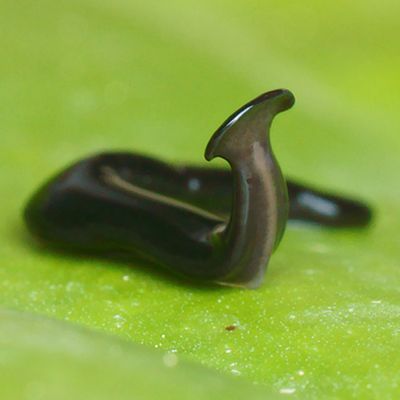
We are in year three of a global pandemic, which has killed over 900,000 people in the U.S. alone and impacted essentially every part of our daily lives. But if it makes you feel any better, scientists have named a worm after COVID-19. Aww <3. Do you feel better now?
The COVID worm, or Humbertium covidum if you’re nasty, is one of two newly discovered species of flatworm scientists found in Europe and Africa. Some fun facts about our new little COVID-honoring worm: It’s black, appears slick and metallic, has a hammerhead, and is just over an inch long. Also it has the potential to be invasive — threatening biodiversity, killing native earthworms and snails, and making the soil less fertile. Go off, COVID worm!
However, its potential to be invasive doesn’t appear to have anything to do with why they named the worm after COVID. The honorific is in part an acknowledgement of the fact that this discovery was made possible because of pandemic-related circumstances. “Due to the pandemic, during the lockdowns most of us were home, with our laboratory closed. No field expeditions were possible,” Jean-Lou Justine, a study co-author and professor at the National Museum of Natural History in Paris, said in a press release. “I convinced my colleagues to gather all the information we had about these flatworms, do the computer analyses, and finally write this very long paper.” The worm’s name is also meant to pay “homage to the victims of COVID-19.” Which is … bizarre? Rude? Not helping at all?
Naming a potentially invasive species of worm after a virus that caused a deadly pandemic feels both wildly inappropriate and completely fitting of the times. Perhaps we should be naming more terrible discoveries after things we hate. I propose we start calling kidney stones “Jeff Bezos’s big, stupid boat.”

